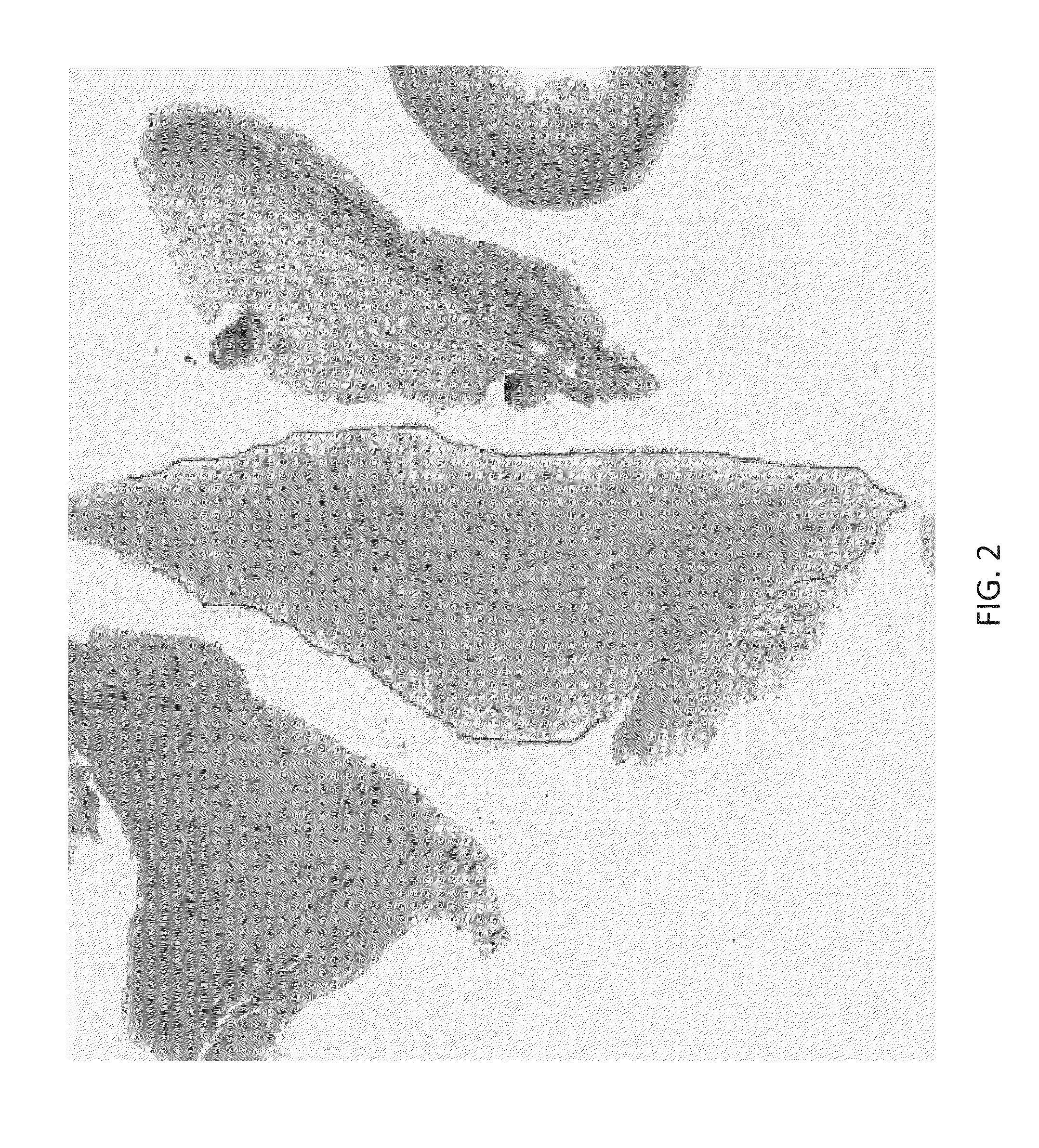Devices and methods for predicting and preventing restenosis
a technology of restnosis and devices, applied in the field of devices and methods for predicting and preventing restnosis, can solve the problems of peripheral stent fracture, failure of drug eluding stents in the periphery, artery stenosis and ischemia of supplied organs, etc., and achieves the effect of improving the accuracy of stent implantation and preventing ischemia
- Summary
- Abstract
- Description
- Claims
- Application Information
AI Technical Summary
Benefits of technology
Problems solved by technology
Method used
Image
Examples
Embodiment Construction
[0045]Section I, below, describes the key observation that quantitative histology may be used to predict rates of restenosis in patients undergoing atherectomy. In particular, certain levels of hypercellularity may indicate restenosis. The degree of lipid-rich tissue, as well as the level of inflammatory cells in the tissue may also be combined (individually or together) with the level of hypercellularity or other factor to provide an indication (which may be provided as an index) of the likelihood of restenosis. Section II describes how these observations may be applied.
Section I: Quantitative Histology
[0046]In an initial study, patients with angiographic follow up data and with a good quality tissue sections for histological evaluation were used. A total 409 specimens from native, primary (de novo) coronary artery lesions, and 354 specimens from restenosis lesion with prior intervention (balloon angioplasty, directional atherectomy or both) were included for the analysis.
Tissue Co...
PUM
 Login to View More
Login to View More Abstract
Description
Claims
Application Information
 Login to View More
Login to View More - R&D
- Intellectual Property
- Life Sciences
- Materials
- Tech Scout
- Unparalleled Data Quality
- Higher Quality Content
- 60% Fewer Hallucinations
Browse by: Latest US Patents, China's latest patents, Technical Efficacy Thesaurus, Application Domain, Technology Topic, Popular Technical Reports.
© 2025 PatSnap. All rights reserved.Legal|Privacy policy|Modern Slavery Act Transparency Statement|Sitemap|About US| Contact US: help@patsnap.com



